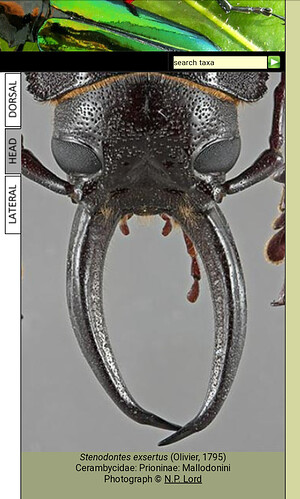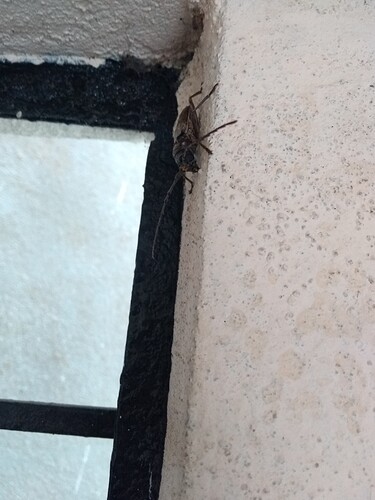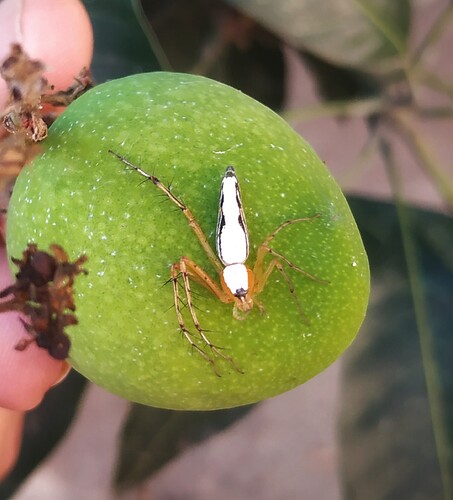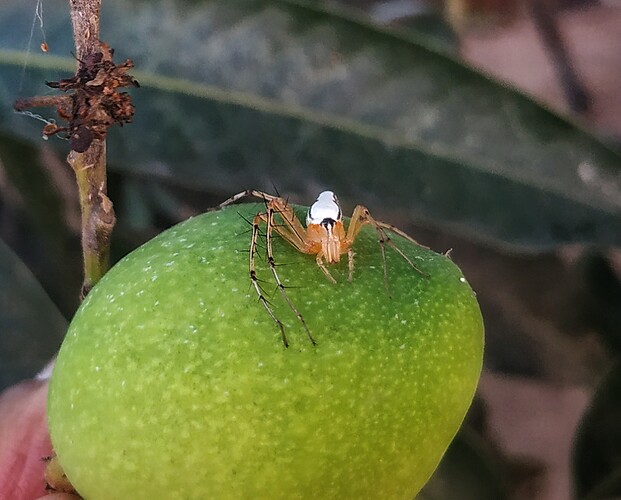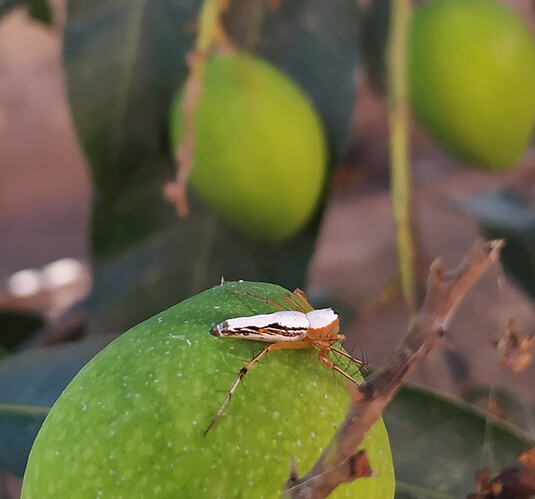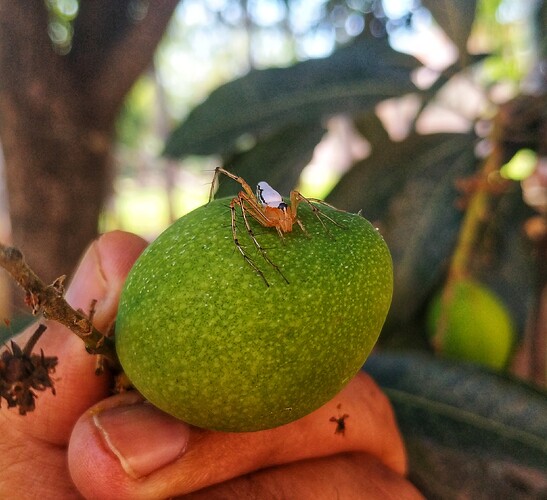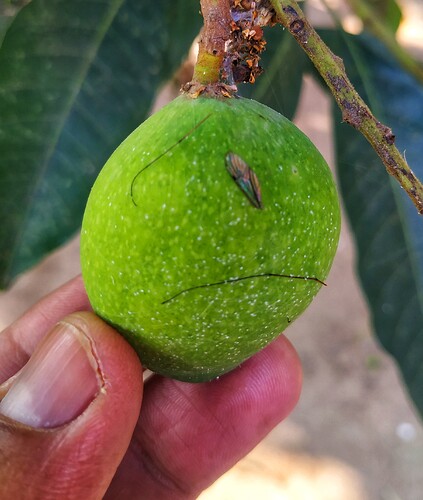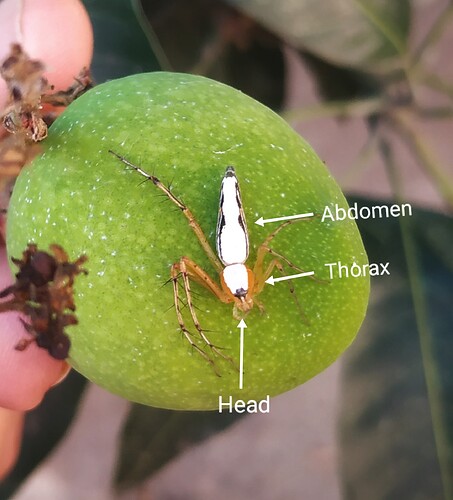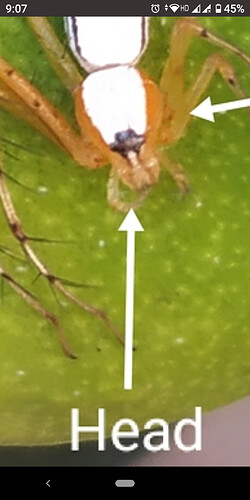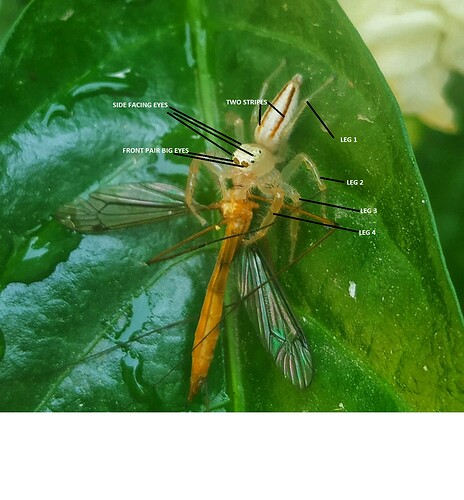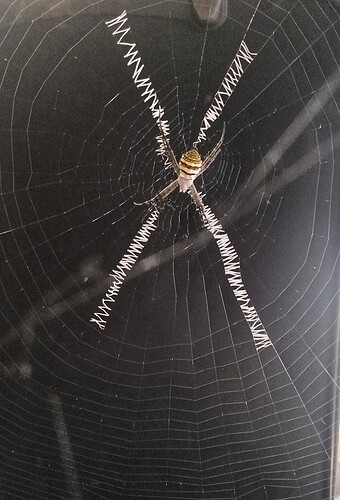How did you find this out?
I mean, like how did you get to know that this beetle needs a tree??
Firts of all, there are similarities between the pic I have taken and images.
There are these two sharp-like thing at the mouth in additional to horns. It definitely belongs to Cerambycedia.
The adult species of these family according to this web page mostly do no do feeding and short-lived. But some groups of this family do feed on flowers of trees.
https://cerambycids.com/longicornid/default.asp?a=fs&id=1
And in the radius of 50 metres, there is only one tree which is in second house next to my home and there is this house next to my home also under-construction and there is lot of wood in that house. The construction work stopped like more than couple of months. The beetle I took picture moved in that direction, I means the two houses next to my place, one has wood and other has tree. I assume that larva may have been grown up to adult in the wood next to my home or in that mango tree. Because I don’t is it possible for beetle to be grown up from larva to adult in more than 100 m of radius to my home and it could have traveled from that long distance to be spotted at my home accidentally as they are accidental invaders? But I suppose it moves very short distance from the place where it has grown up and ended up at my home accidentally and tried to return its place ( I mean it the place may be wood or tree). I don’t found data on internet that these species belong to Cerambycedia live on walls or soil like dung beetles. But, this insect needs some place definitely to hide from its predators, for its food or to lay eggs.
Found something really interesting for you all!
This insect (looks like a spider) was lurking on a mango in my backyard. Took few pics with my mobile:
If you observe closely you will find that:
- The legs on its right side are bigger.
- The legs on right side are hairier.
- The legs on the right side appear stronger as well.
- It resembles a jumper spider but has six legs only.
Is it possible:
- That it had lost its legs on the left side and is re-growing them?
Or - That its just like that only and its a feature of the insect?
Or - It suffers form some disease (something like polio) that afflicted it?
What do you think?
Great images @singh sir!!
Really impressive pictures and can see everything in detail…
Such pictures help us in identifying organisms till their species level…
Is this the method that you use to take these pictures @singh sir? ![]()
For answering this question:
We need to first understand or get to know which species this spider like belongs to.
When we get to know which species this spider or this insect belongs to, then we will also get to know whether these below mentioned characteristics do belong to this particular species or not.
No these pictures have been shot on a smartphone camera using manual mode.
The ‘Jugaad’ camera can only be used for very close objects.
Thanks for appreciating my efforts.
Yes I believe its an insect because it has 6 legs. all the legs seem to be attached to the front portion of the body.
Generally insects have three part body - head , thorax and abdomen.
But this creature here seems to have two part body like a spider. So, either this is a spider with two legs missing/hidden or an insect who is trying to pretend to be a spider.
Spiders are masters when it comes to hiding, but this insect/spider seems to like this particular mango. It never hides nor does it move much. It stays there day and night as if it doesn’t have any natural predators.
Two legs and a wing! The remnants of a successful hunt.![]()
I didnt understand what you meant to say here
I have labelled here in this picture that you sent @singh sir
The head, thorax and the abdomen
What say?
Need help @Pritika @Venkat
Can you also help us in identifying?
Here, @singh meant to say that the Spider here is missing/hidden with two legs.
The legs aren’t seen here or are missing.
Is it Sir?
@singh
Absolutely @drishtantmkawale
Actually, initially I thought it’s the male of the two striped jumping spider. But then I found one leg missing on each side.
So I thought maybe it’s a an insect or a spider with either 6 legs or may be it has 8 legs and two legs are not visible. You got me right.
But then if its an insect,
then we will be able to see 6 legs…right?
its 3 pairs of jointed legs for the insects.
@drishtantmkawale @singh
If we expect to see 8 legs…then it wont be an insect…
@Lydia
What will it be then?
What is that appendage near it’s head.(near white arrow showing head)
Are these tentacles or antenna?
Or are these legs?
@singh Sir, when you asked me
I had to search, what is the difference between tentacles and antenna
This is what I got! ![]()
Difference between antenna and tentacle is that antenna is a feeler organ on the head of an insect, crab, or other animal while tentacle is an elongated, boneless, flexible organ or limb of some animals, such as the octopus and squid.
Reference: https://wikidiff.com/tentacle/antenna
According to this information, I guess it looks like an antenna
It can’t be a tentacle as it doesnt look boneless and its not elongated…
So it might be antenna
@Lydia
Here is my rather unscientific and rudimentary classification of the following spider:
Kingdom : Animalia (All animals are in this kingdom)
Phylum : Arthropoda (includes insects, arachnids, myriapods etc)
Subphylum : Chelicerata (Scorpions, spiders and like)
Class : Arachnida (Spiders, scorpions, ticks - having 8 legs)
Order : Araneae (8 legs, fangs, spinnerets for making webs - Our specimen has 8 leg and probably has fangs to capture the prey)
(Zoom on the image for a better view)
Family : Salticidae (All jumping spiders, 4 pairs of eyes and front pair of eyes larger than other eyes - Our specimen has same types of eyes)
(Zoom on the image for a better view)
Genus : Telamonia (colorful spiders, two longitudinal stripes along the abdomen - Our specimen has two stripes)
Species : Telamonia dimidiata (The female is light yellowish, with a very white cephalus and red rings surrounding the narrow black rings around the eyes. Two longitudinal bright red stripes are present on the opisthosoma)
Our specimen is a female.
Great work Sir!
@singh @Pritika, when we are gathering, presenting any biological data, we should always keep in mind the references from where we have got this information.
Evidence based Research is what we should look for!
Otherwise, it would be the same like believing in a Baba, in the sense what they said is the truth.
The reference links and citations are to be kept in mind while posting!
This is great!!
Using just one picture, you could identify this spider!
This is a great example of identifying an organism so easily without thinking that its a hard work.
It is very easy. ![]()
Please keep us updated with such new organisms… @singh sir, @Pritika @Venkat
If we look around, we get to see many such visitors in our environment! ![]()
Its great to get to know them… ![]()
@Lydia Well, it seems classification is not my cup of tea, at least, as of now. All I can say with certainty is that it’s a spider.
I’ll stick to what I can do - shoot them:
Another lovely spider.
Wooww…!
This is lovely.
What is that white long spiral pattern?
Is that too a part of the web of this spider?
